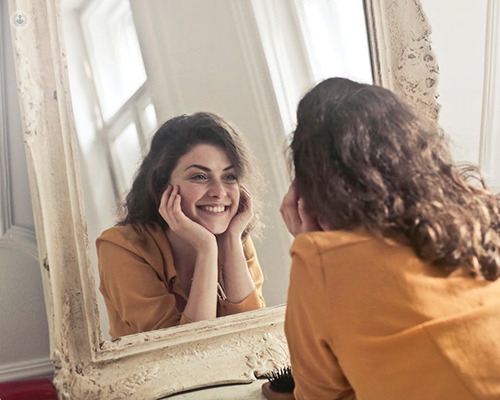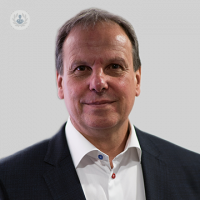Measuring patient satisfaction with their appearance after rhinoplasty
Escrito por:Rhinoplasty is one of the most popular surgical aesthetic treatments in the UK. It is a complex surgical procedure that involves reshaping the nose to change a person’s appearance. This requires top surgical skills and an understanding between the patient and the surgeon about what the goal of the surgery is, and what the nose should look like afterwards.

Achieving this can be challenging because facial appearance is subjective. Whilst the nose’s appearance can be measured objectively using photographs in a clinical setting, it is also important that the patient is asked about the appearance of their own nose, and how they feel about it both before and after undergoing surgery. Asking the patient about the outcomes of a surgery is called a patient reported outcome (PRO). PROs are becoming more and more important in confirming a surgeon’s quality assurance and improving a physician’s transparency.
Mr Charles East, a leading facial plastic surgeon, explains how a scientifically sound PRO instrument could be used to measure how patients perceive the appearance of their nose, and how this could improve our understanding of facial aesthetics, and hence improve future rhinoplasty surgeries. This is based on research carried out by Mr East and a number of other plastic surgeons in a London clinic.
How do we objectively measure patient satisfaction with their appearance?
This research used a questionnaire that was given to over 50 patients in a rhinoplasty clinic in London. Each patient completed the questionnaire four months after their operation. The questionnaire was comprised of 15 questions that asked the patients to answer in relation to the level of satisfaction they had with each item.
Ten of those items related to satisfaction with their nose:
- The width of your nose at the bottom (from nostril to nostril)
- The length of your nose
- How the bridge of your nose looks (where glasses sit)
- How well your nose suits your face
- How straight your nose looks
- The overall size of your nose
- The shape of your nose in profile (side view)
- How your nose looks in photos
- How the tip of your nose looks
- How your nose looks from every angle
Five of those items related to satisfaction with their nostrils:
- The size of your nostrils
- The shape of your nostrils
- How much your nostrils show
- How even (well-matched) your nostrils look
- How your nostrils look
Why would we want to be able to measure patient satisfaction with their appearance?
There are numerous benefits of being able to objectively measure patient satisfaction of their appearance, but using such a questionnaire could provide a way for plastic surgeons to evaluate their surgical outcomes to better identify where they do achieve patient satisfaction, and where they do not.
By quantifying patient satisfaction, surgeons would be able to compare rhinoplasty techniques to determine which approach has the best outcome in terms of patient satisfaction. Such information acts both as feedback to the surgeon and allows the surgeon to set more accurate expectations for their patients.
Therefore, being able to measure patient satisfaction allows the surgeon to set realistic expectations, as well as helping to identify ideal outcome objectives for each patient.
If we could better understand aesthetics of the nose, we could improve future rhinoplasty surgeries as a result.
If you are considering a rhinoplasty and would like more information, make an appointment with a specialist.


